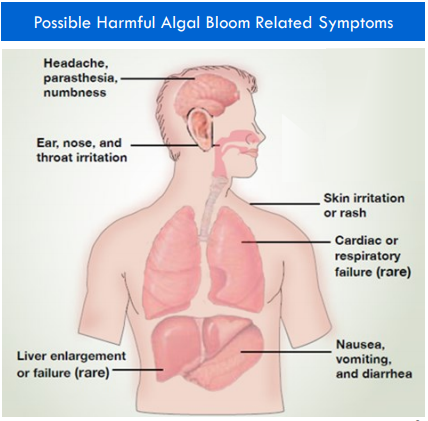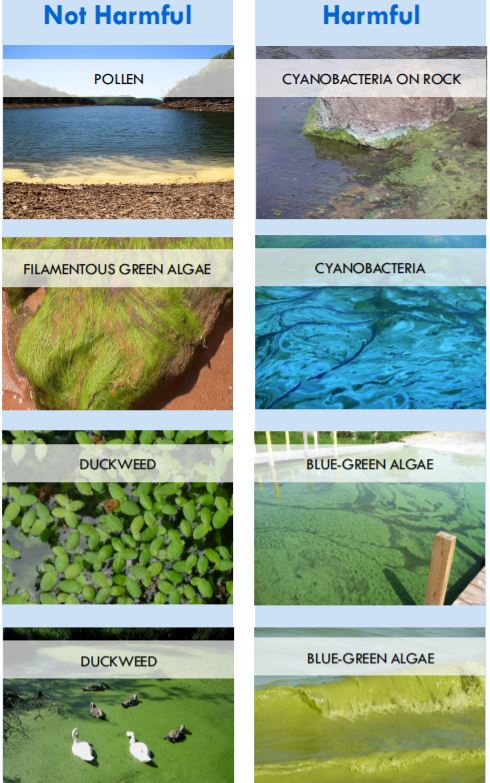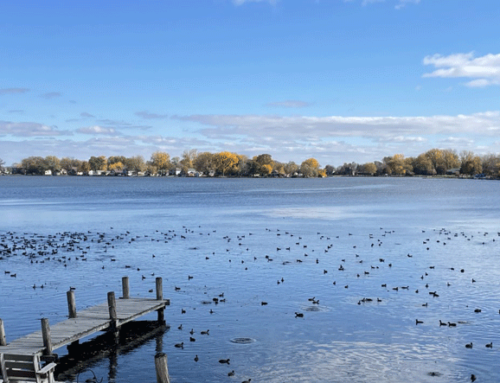Blue-green algae, also known as cyanobacteria, are responsible for harmful algal blooms. This is because some cyanobacteria can produce toxins that cause adverse health effects for both humans and their pets. While not all blue-green algae produce harmful toxins, those that do can cause rashes, diarrhea, and respiratory problems. Some common toxins produced by cyanobacteria found in Wisconsin waters include microcystin and anatoxin.
Humans (and our pets) can be exposed to harmful algal blooms through accidental ingestion while swimming, by inhaling water spray (aerosols) during water recreation (such as boating), or by being in the water where a bloom is occurring. Your best bet is – “When in doubt, best keep out!”. Don’t go in the water if you are unsure about conditions and avoid water where a visible blue-green algae bloom is present.
The DOs and Don’ts of Harmful Algal Blooms

Image credit: HARMFUL ALGAL BLOOMS TOOLKIT, 2019
According to the Wisconsin DNR, there are additional measures you can take to PROTECT yourself, children, and pets:
- Do not let children play with scum layers, even from shore
- Do not treat surface waters that are experiencing blue-green algae blooms with any herbicide or algaecide– toxins are released into the water when blue-green algae cells die
- Always take a shower after coming into contact with any surface water (whether or not a blue-green algae bloom appears to be present; surface waters may contain other species of potentially harmful bacteria and viruses)
The WI DNR also recommends several measure to help REDUCE future blue-green algae blooms:
- Maintain native vegetation along shorelines as buffer areas
- Minimize activities that result in erosion
- Reduce the amount of fertilizer used on lawns
- Use only phosphorus-free fertilizer when possible
- Fix leaking septic systems
- Use only phosphorus-free detergents in dishwashing machines
What to do if your suspect exposure?
If you think you are experiencing symptoms from exposure to harmful algal blooms, contact your doctor or Poison Control Center (800-222-1222) right away. Call a veterinarian immediately if your animal shows any of the following signs of blue-green algae poisoning: lethargy, seizures, vomiting, diarrhea, convulsions, difficulty breathing, or general weakness.
What do blue-green algae look like?

Wisconsin Department of Natural Resources video on blue-green algae
Additional Resources:
Lots more information about blue-green algae can be found on the Wisconsin DNR website by clicking here. You can also CLICK HERE to view the HARMFUL ALGAL BLOOMS TOOLKIT.
Looking for Wisconsin DNR blue-green algae contacts? CLICK HERE
National Centers for Coastal Ocean Science Algal Bloom Monitoring System: CLICK HERE
CLICK HERE to learn about the phosphorus pollution and algae connection.






